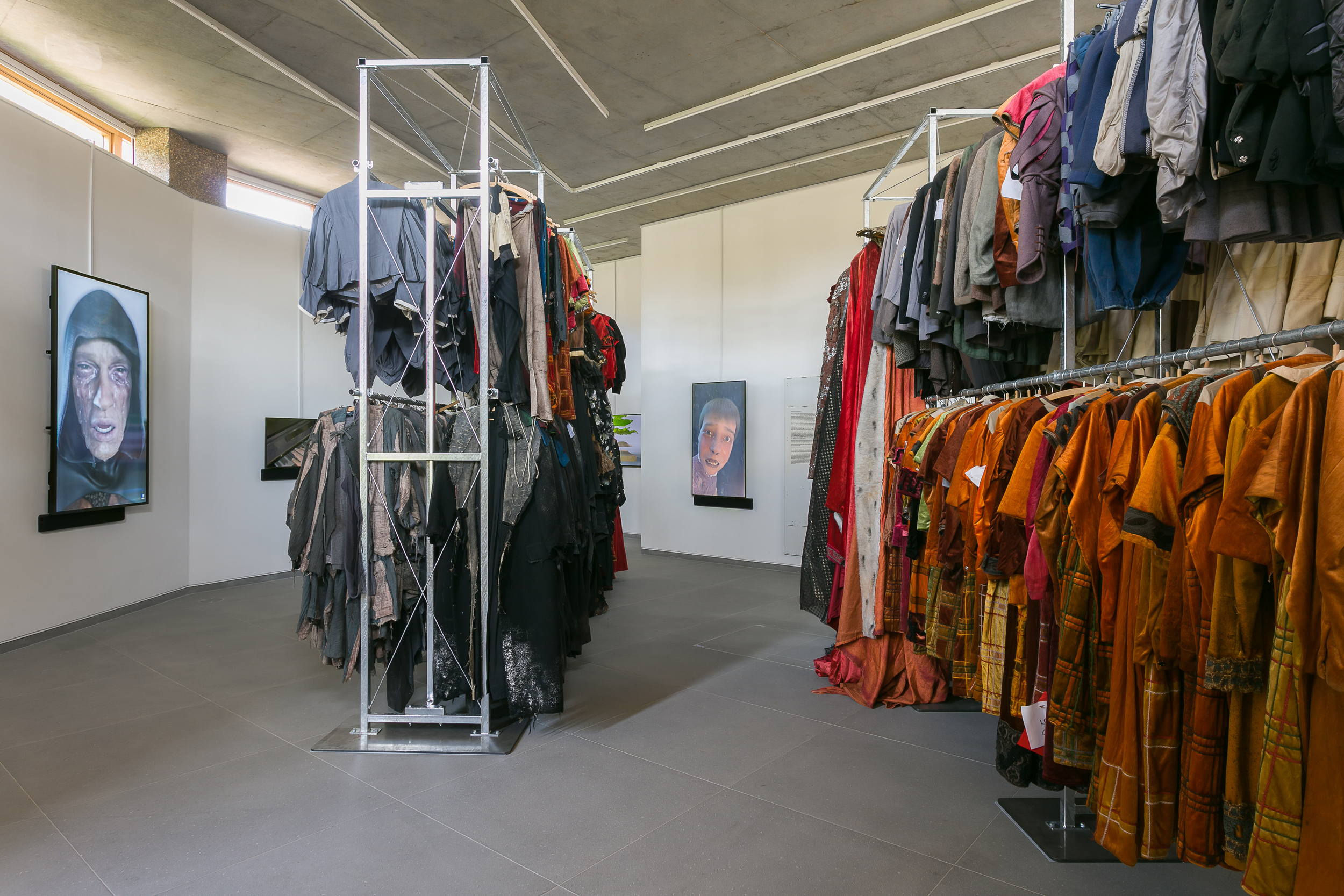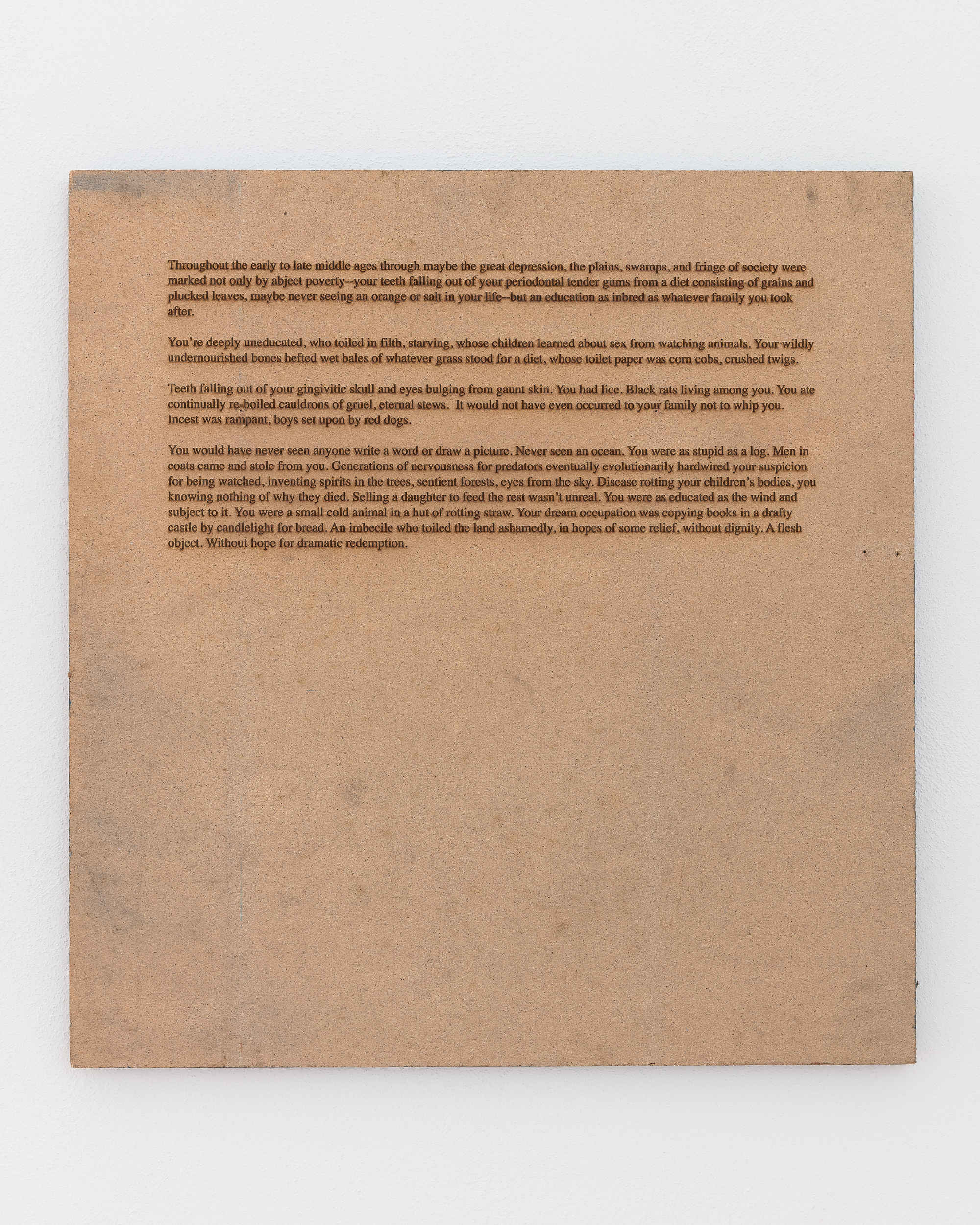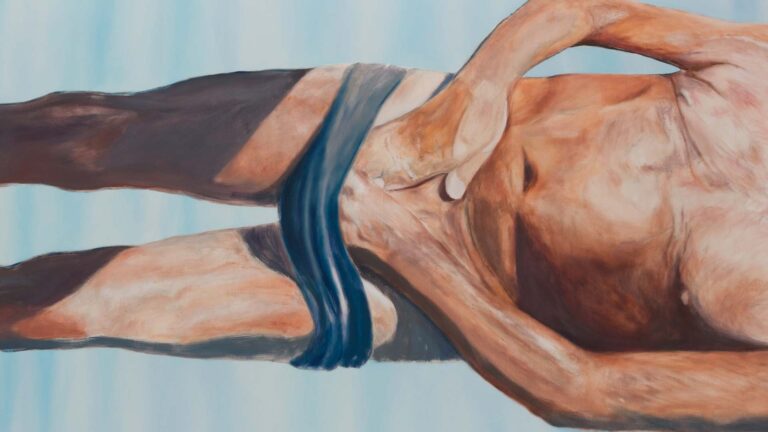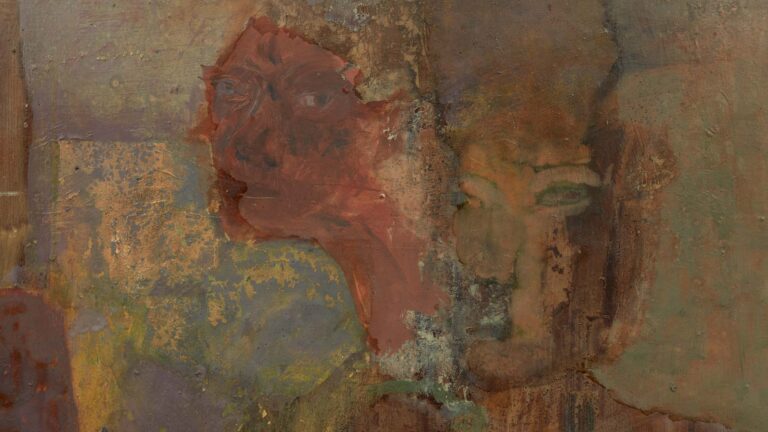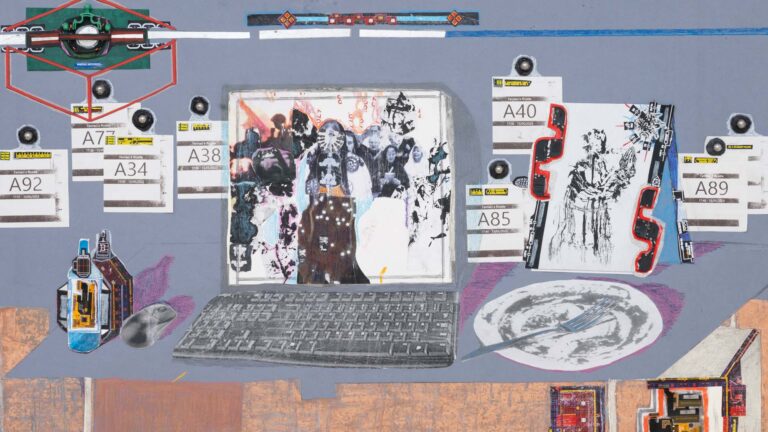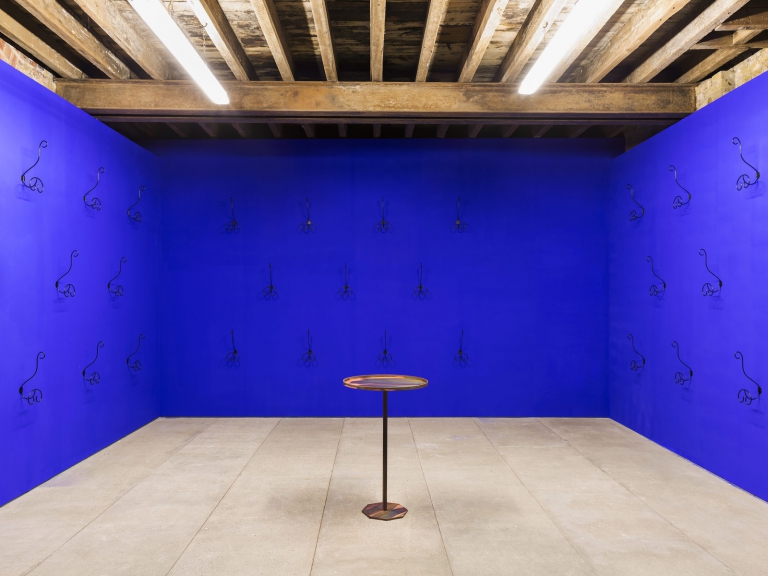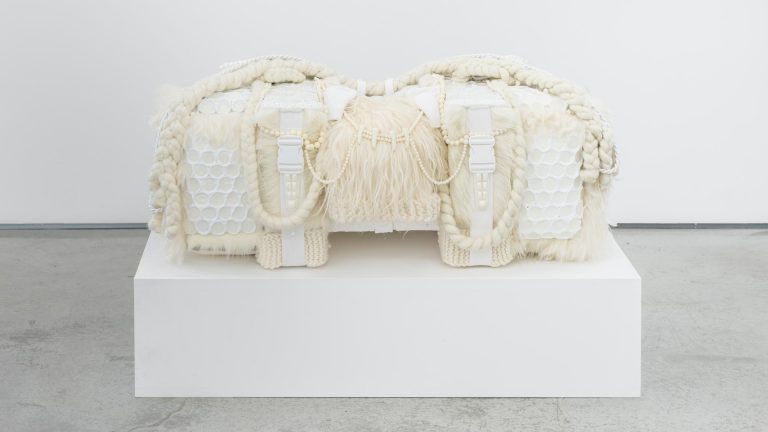Artist: Ed Atkins
Exhibition title: OLDE FOOD
Venue: Cabinet, London, UK
Date: April 26 – June 2, 2018
Photography: all images copyright and courtesy of the artist and Cabinet, London
OLDE FOOD
A gigantic baby, a foppish boy and a drowned man weep and drool, failing to learn anything. A nameless crowd careens down a hole, forever – or forms letters in choreographed formation. A spartan, looping piano piece by Jürg Frey is performed in a concrete cell, a hermit’s cot and a bucolic garden in midsummer. Reflexive information panels essay a barbaric real world entirely absent from the exhibition. Credits roll to denote an ending that never begins, and social media corporations sponsor everything, seemingly unbidden.
Atkins has created a new series of works that build upon the allegorical possibilities of his particular brand of video making, shifting the aesthetic into ever more precarious areas of desire, historicity, melancholia and stupidity. Atkins is known for a series of video installations peopled by CGI surrogates, animated by motion capture performances and voiced by the artist himself. In his more recent work, the artist has expanded his exploration of the medium, tempering affecting autobiographical figuration with broader issues arising as a consequence of the form’s exponential preponderance. Where previously death was the precondition of love and the logical end point to the wants of representation, Olde Food presents a system that’s at once less morbid and far less romantic. The world of Olde Food is always -already lost, persisting regardless, with no mortal redemption in sight. Olde Food never rots, never moulders – it simply persists, a world of melancholy where what was lost remains outside the possibility of ever being understood, let alone retrieved.
The Masses No. 1 and 2
The costumes that constitute the sculptures, The Masses #1 and #2, are excerpted arbitrarily from the huge archive of the Deutsche Oper, Berlin, an unprecedented acquisition by Ed Atkins. They are a significant component of the body of work, Old Food. They are presented identical to the way in which they are archived, on double-height racks, and span, roughly, a period of productions from the early sixties to the late nineties. Included in their number are costumes from Wagner’s The Master Singer; more than one production of Verdi’s Macbeth, alongside robes from his Aïda; a vast array of peasant dress; Elizabethan breeches and doublets; hand-painted silk kimonos, and one or two muscle-suits that once bulked out the actor playing Verdi’s titular protagonist, Don Carlo.
Part perverse mise-en-scène, part practical acoustic treatment, part objet trouvé, The Masses invites a reading of the concurrent Old Food videos as aspirationally operatic and as compromised historical dream – both in their failure to sufficiently address their contemporary moment, and their presumed locale, from 11th century Scotland to ancient Egypt to Berlin, and the world, today. Just as the costumes are displayed in a manner to subvert their role as instruments of immersive storytelling, Atkins’ videos constantly undo both their realism and their elaborate technology. The effect, ironically enough, is one of genuine imminence.
The Masses stand in contrast to and peculiar accord with, the computer generated animations: their sheer physicality, compressed and archived, is converse to the animations’ overt digital immateriality, but the loss that the costumes enact – the thousands of bodies that once animated them; the trace sweat and scurf of every night of performance dormant in the cloth – is the same loss that suffuses each video. Both The Masses and the videos shockingly lack life, despite their almost hysterical pursuit of it. The failure to sufficiently represent life, bodies, experience, and historical truth defines Old Food, even and especially as it chases authentication through a surfeit of realism – CGI, finally, in thrall to the same combination of artificial verisimilitude and spectacular pomp as opera. The protaganists weep constantly inside of their loops; the dramatic redemption that defines the form of opera is as absent and irredeemable as the cause of those tears.
Ed Atkins, Installation view, Olde Food, Cabinet, London, 22 April – 2 June 2018
Ed Atkins, Installation view, Olde Food, Cabinet, London, 22 April – 2 June 2018
Ed Atkins, Installation view, Olde Food, Cabinet, London, 22 April – 2 June 2018
Ed Atkins, Installation view, Olde Food, Cabinet, London, 22 April – 2 June 2018
Ed Atkins, Installation view, Olde Food, Cabinet, London, 22 April – 2 June 2018
Ed Atkins, Installation view, Olde Food, Cabinet, London, 22 April – 2 June 2018
Ed Atkins, Installation view, Olde Food, Cabinet, London, 22 April – 2 June 2018
Ed Atkins, Untitled, 2018, HD video with stereo sound, 5 minutes 30 seconds
Ed Atkins, Untitled, 2018, HD video with stereo sound, 5 minutes 30 seconds
Ed Atkins, Good bread, 2017, HD video with stereo sound, 16 minute loop
Ed Atkins, Neoteny in Humans, 2017, HD video stereo sound, 16 minute seamless loop
Ed Atkins & Contemporary Art Writing Daily, Untitled, 2017, Laser etched text wood, 84.7 x 79.9 cm
Ed Atkins & Contemporary Art Writing Daily, Untitled, 2018, Laser etched text on wood, 35.5 x 39.5 cm
Ed Atkins, Untitled, 2018, Indian ink & pencil on paper, 47 x 40 cm
Ed Atkins, Untitled, 2018, Indian ink & pencil on paper, 47 x 40 cm






